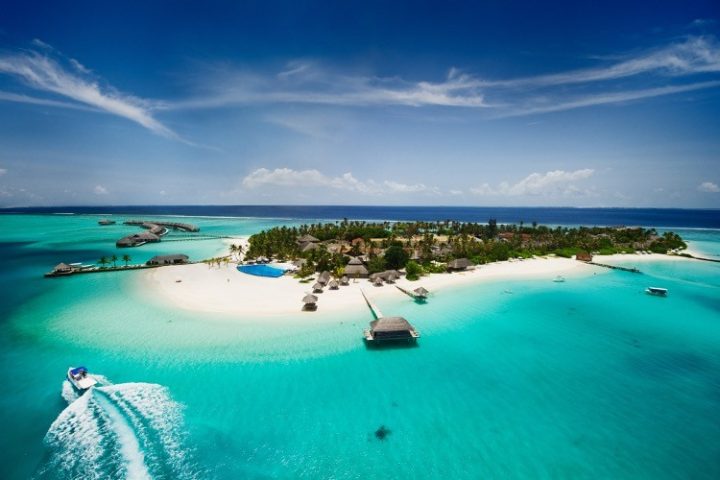
Despite constant fearmongering about dangerous sea-level rise due to anthropogenic global warming, more actual evidence is emerging that the vast majority of islands in the Pacific and Indian Oceans are either stable in size or growing. A 2021 paper released in the scientific journal Anthropocene shows that of 221 islands studied, 153 show “a predominantly stable or accretionary trend in the area of atoll islands worldwide.”
In other words, the islands studied are generally either staying the same size or growing.
The study’s authors include Andrew Holdaway and Murray Ford of the University of Auckland in New Zealand and Susan Owen of Simon Fraser University in Canada.
The study shows that the islands studied have expanded by approximately 62 kilometers squared, which translates to roughly 15,000 acres overall. The lowest lying nation on Earth, the Maldives islands in the Indian Ocean, expanded by 37.5 square kilometers, approximately 9,200 acres. Overall, it shows that the islands in question have expanded more than six percent between the years 2000 to 2017.
“Results show that, between 2000 and 2017, the total land area on these atolls has increased by 61.74 km2 (6.1 %) from 1007.60 km2 to 1069.35 km2,” the study states.
This study credits intervention by man with much of the growth in the islands.
“The human modification of island shorelines is widespread within populated atoll islands, as nations seek to protect urban infrastructure and create more land to accommodate internal migration and economic development,” according to the study.
The study claims that the majority of island growth is taking place in the Maldives, where tourist areas along with land used by the native population have been reclaimed.
“Similarly, noteworthy island building has occurred within the Maldives, where islands have been expanded to house tourist resorts, as well as increase the availability of land for the local population and infrastructure,” the study states. “Such large-scale reclamation projects have created new islands, such as Hulhumalé Island in the Maldives, which is 1.80-1.90 km2 and currently expanding further.”
Another man-made factor is in the South China Sea, where Communist China, along with Vietnam and the Philippines, has been, in effect, creating islands on which to place military assets.
“Several studies have documented the construction of islands within the South China Sea, where several nations have built islands as tensions over marine boundary disputes have increased,” according to the study.
Despite the man-made increase in island size, the study’s authors also assert that there is little evidence of sea-level erosion in the vast majority of the islands being studied. In fact, no island greater than 10 hectares in size (and only 1.2 percent of islands greater than five hectares in size) has decreased in size since the 1980s, according to a 2018 study done by Virginie Duvat.
“Despite the widely circulated assertion that atoll islands are actively eroding, however, little scientific evidence exists to support such blanket claims,” the newest study says. “Records do not exist of widespread, chronic erosion of atoll islands under current rates of sea level rise.”
“Rather, studies have shown that islands have persisted, and in many cases increased in size, since the mid-20th century.”
How does an island in the middle of the ocean grow larger? Many believe that sediment generated by reefs is delivered to the islands by waves. This same type of natural island building was noted by a University of Auckland study in 2010 in a look at the islands of Tuvalu, Kiribati, and the Federated States of Micronesia.
“The reason for this is these islands are so low lying that in extreme events waves crash straight over the top of them,” the study’s author Paul Kench said at the time. “In doing that they transport sediment from the beach or adjacent reef platform and they throw it on to the top of the island.”
The new study allows for this possibility of island growth as well, but is careful to offer a caveat, saying, “Robustly identifying and attributing the specific processes responsible for island growth, however, remains a challenge.”
All of this only goes to show that whether sea level is rising or not — and the best data shows that sea level is rising at the same slow pace that it has for millennia — mankind has a unique ability to adapt to these changes. Absent some absurd The Day After Tomorrow scenario where catastrophic climate change happens all at once, mankind is more than capable of adjusting to sea-level change — even on those tiny islands in the Indian and Pacific Oceans.



